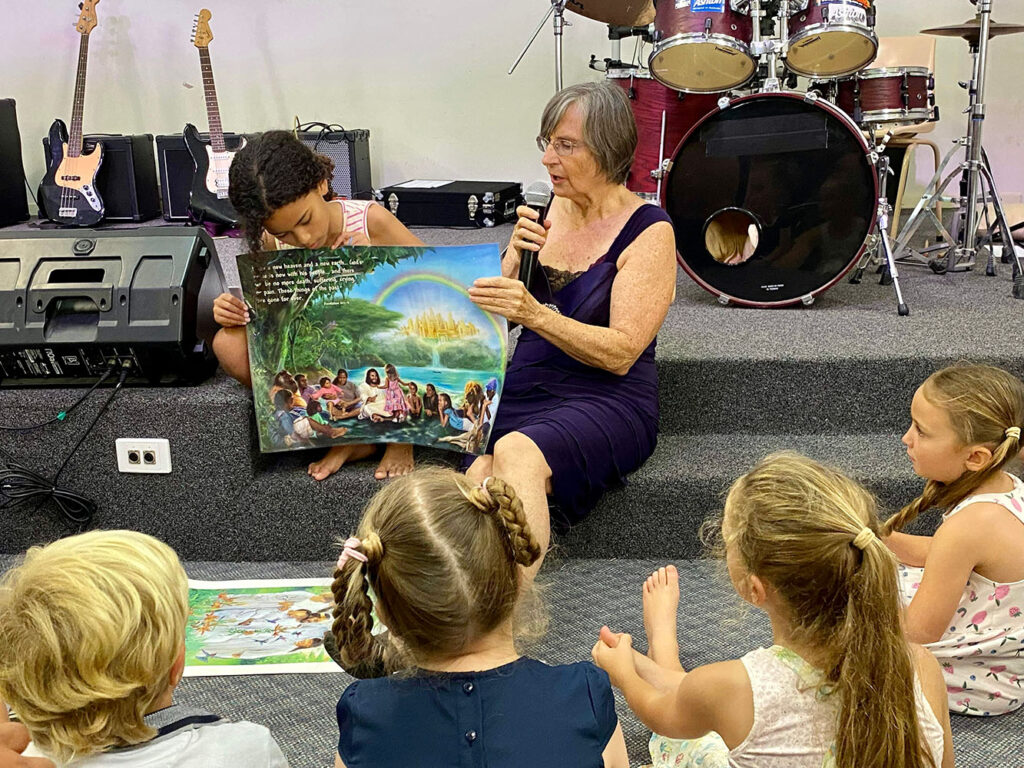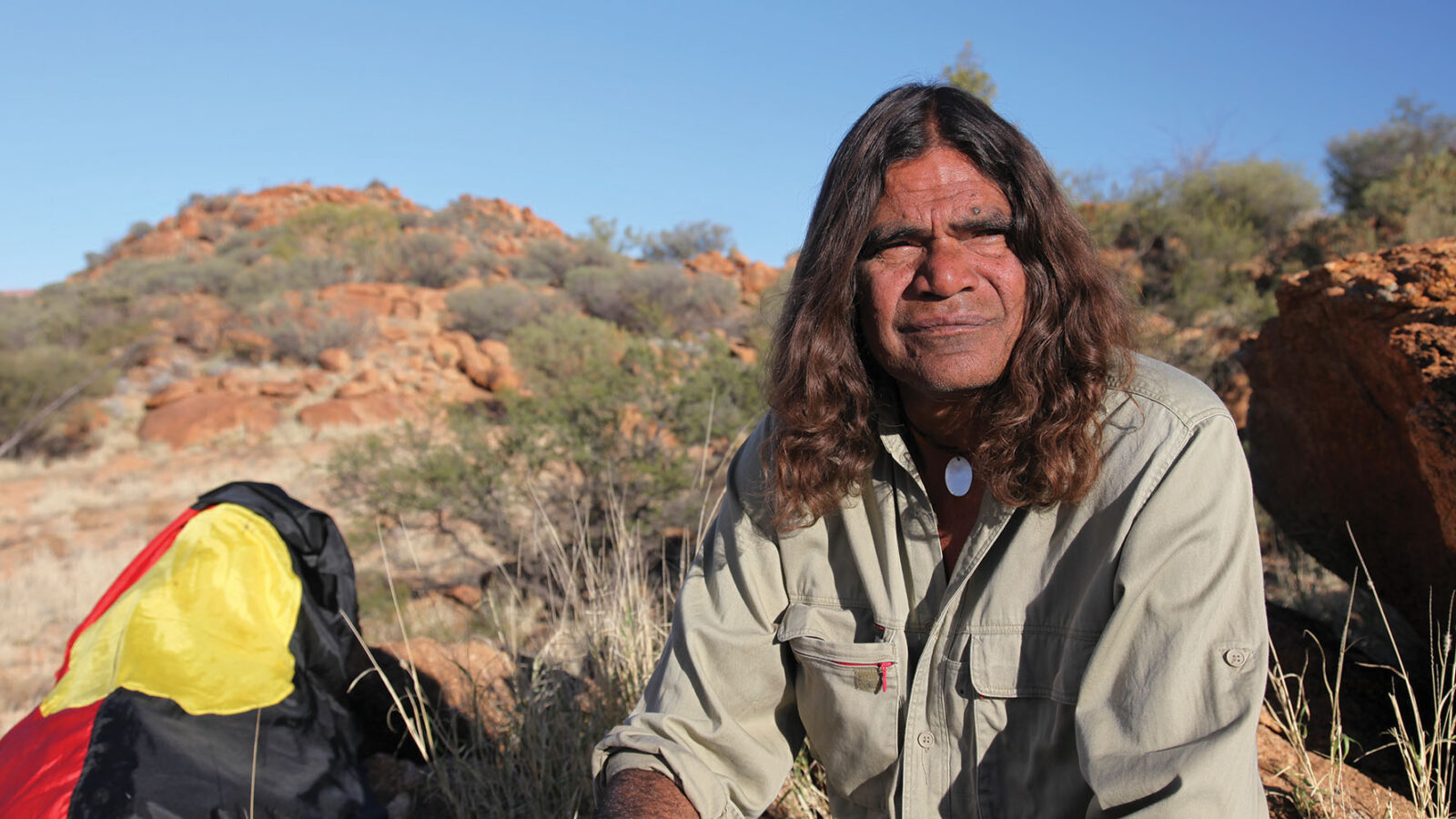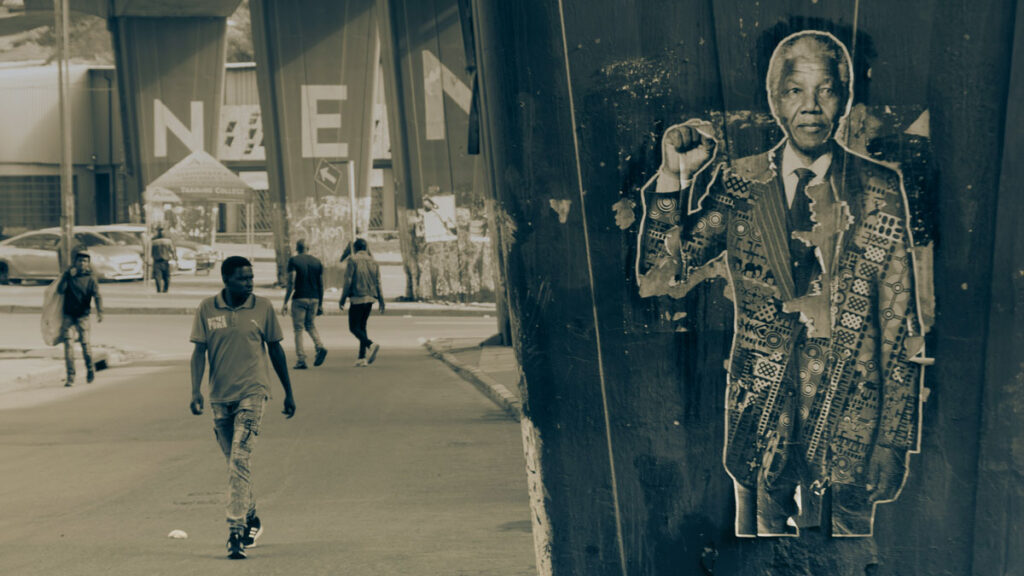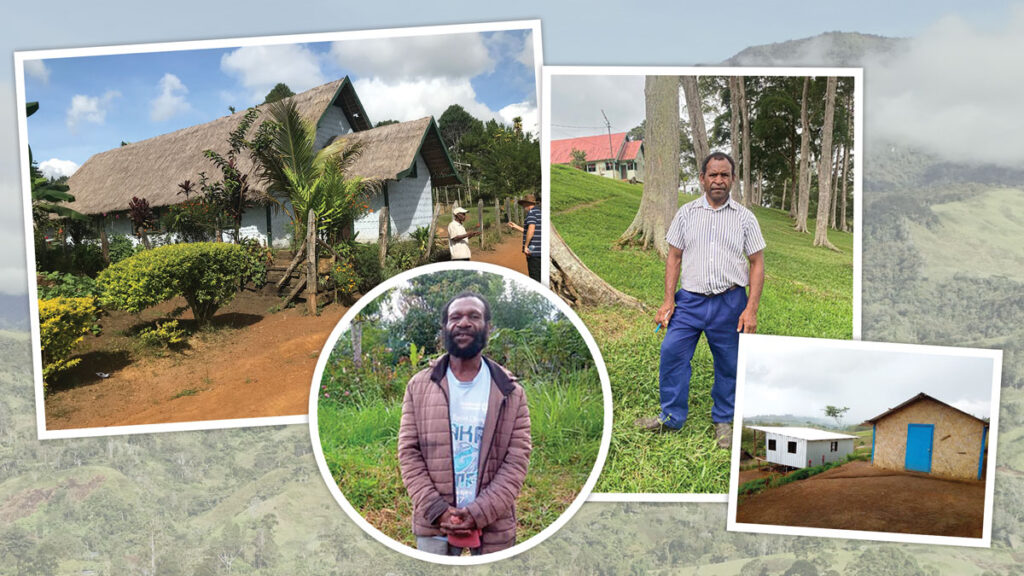Facing the legacy of colonisation in the South Pacific
Isaiah 58:6,7 sounds a powerful call for integrity among those who claim to worship God:
“Is not this the kind of fasting I have chosen: to loose the chains of injustice and untie the cords of the yoke, to set the oppressed free and break every yoke? Is it not to share your food with the hungry and to provide the poor wanderer with shelter—when you see the naked, to clothe them, and not to turn away from your own flesh and blood?”
The last line asks us to notice each other and not turn away. Why do we need this reminder?
Over time, our brains have a tendency to stop noticing things. For example, after moving into a different apartment two years ago, I thought I couldn’t cope with the sound of children running on the wooden floor above. But within a week, I had tuned much of it out. This ability is useful when it comes to disturbing sounds.
But we can also start to “tune out” disturbing moral information. Incidents that should shock us and inspire empathy, over time, can result in indifference. Have you noticed how easy it is to point out problems in other nations? Mass shootings in the United States, persecution of Uyghur people in China, protestors murdered in Iran—the cruelty of these situations is glaringly apparent to us. But let’s consider what other people may see when they look at Australia.
Consider just three facts about First Nations people in Australia:
- Proportionately, Aboriginal and Torres Strait Islander people are the most incarcerated in the world.1
- In Australia, the age of criminal responsibility is 10 years old, while the international median is 14. This means that police can arrest, strip-search and imprison children who are only 10 (around grade 3 or 4). In a year, we lock up approximately 600 kids between the ages of 10 and 13. First Nations children make up the majority (65 per cent in 2017–21). Australia has come under repeated international criticism for not raising the age of criminal responsibility.2
- First Nations children make up less than 5 per cent of the youth population, but represent 25 per cent of child suicides.3
Add to this the mounting numbers of Aboriginal deaths in custody, the alarming rate of children removed from their families, a diabetes crisis, and the picture is grim.
Unfortunately, this is a global pattern among First Nations survivors of colonisation. Murder, appropriation of land, denial of culture and the imposition of foreign diets, diseases and economies produce similar long-lasting damage.4 Save Tonga, all Pacific countries were colonised.5 While most have since gained independence, they struggle with a detrimental legacy. Diabetes, for example, is now an epidemic.6 Pre-colonisation however, it “was virtually non-existent in populations indigenous to the Pacific maintaining a traditional lifestyle”.7
In Australia, the state rounded up Aboriginal people and placed them on government reserves or church-run missions. One of these missions was established by the Seventh-day Adventist Church: “Mona Mona” near Kuranda in northern Queensland. It operated between 1913 and 1962 and cooperated with assimilationist state policy of the time. This included accepting children removed from families, keeping parents on the mission fenced away from their own children (who were held in single-sex dormitories),8 and forbidding the people to speak their own language or practise their culture.9
The legacy of the mission is mixed. While some have fond memories, it has also been described as “little more than a prison”.10 Members of the Stolen Generation brought up at Mona Mona have since sought compensation from the Queensland Government11 and the Seventh-day Adventist Church issued a statement of apology in 1997 in response to the “Bringing Them Home” report.12 One assumes those running the mission at the time had good intentions, but it has also been the source of much pain.13
Does this history—and the current crisis of disadvantage—disturb us? Or have we become—as one poet has put it—“comfortably numb”? Interestingly, Holocaust survivor Elie Wiesel asserted that “the opposite of love is not hate, it’s indifference”.14 Similarly, Martin Luther King Jr observed: “It may well be that we will have to repent in this generation. Not merely for the vitriolic words and the violent actions of the bad people, but for the appalling silence and indifference of the good people.”15
So how are we—individually and as a Church—to respond to this crisis now? Thinking about the life of Jesus, something becomes apparent: He was an expert “noticer”. It was as though His eyes were especially sharpened to notice the most hurt, the most rejected, wherever He was. Think of the following examples:
- Jesus noticed Zaccheus, whom most people despised (Luke 19:1–10);
- Jesus noticed the blind beggar, whom others found loud and annoying (Luke 18:35–43);
- Jesus noticed an invalid, whom everyone else had abandoned (John 5:1–18);
- Jesus noticed a foreign woman whom the disciples wanted sent away (Matthew 15:21–28).
After noticing these people, Jesus healed them, physically and emotionally, and brought them into the circle of acceptance and love. So, if we want to be like Jesus, we also need to notice the most hurting in our communities and bring them into our circle of love. The question Jesus asks of us is “Are you the neighbour?” (Luke 10:37).
So, what can we do practically as local church members? Here are three suggestions specific to Australia. The same principles could be followed in other countries.
- Educate. In order to empathise, we first need to understand. As with many other colonised countries, Australian historians were reluctant to include “unsavoury” elements in the national story. Anthropologist William Stanner referred to this as “the great Australian silence” and “a cult of forgetfulness practised on a national scale”.16 As such, it’s likely that we didn’t learn a full account of history in our schooling. The Reconciliation Australia and Australians Together websites are two good places to begin.
- Connect. Get in touch with local elders via your local Aboriginal Land Council. Build a relationship and find out the community’s needs and how you can support them. Should you wish to learn in a group setting, your church can organise cultural awareness training through your local Aboriginal Land Council.
- Respect. Recognise important dates on the First Nations calendar—for example, National Reconciliation Week and NAIDOC week. Acknowledge the land that you are on as part of your church events.
While our brains can “tune out” information, the opposite can also occur. We can begin to notice things we didn’t see before. For example, when you buy a new car, you suddenly notice the same model everywhere. Whatever the track record of your church to date, start engaging with the First Nations community around you—and watch the opportunities grow!
Last year during National Reconciliation Week, Aboriginal Bible worker Doreen Waites shared this: “Doors are opening for people to be educated on how hard our lives are. And God is touching hearts to be a part of our healing. We have longed so much for this. We need loving hearts to help First Nations people see that the only solution to our pain is Jesus Christ.” Her words deeply affected me and reminded me of Paul’s vision of the Macedonian man saying, “Come over to Macedonia and help us!” (Acts 16:9). Can you hear? Can you see? Can you be part of the healing? May God bless you and your church as you reach out to “be the neighbour”.

Local church engagement
Cooroy Adventist Church began their journey to connect with First Nations people in their community last year and are already thrilled at how things are blossoming. Pastor Jacob Ugljesa explained what sparked his interest: “Hearing the stories of inspiring ministries like Mamarapha College and Dreamtrack [at the 2021 AUC Constituency meeting] excited me to see how my local church could be a place of support and healing to the First Nations community in our region.”
Church members Brian and Linda Curson were delighted to accept the role of Cooroy’s first Aboriginal and Torres Strait Islander Ministry coordinators. Since then, they have connected with local Gubbi Gubbi elder Aunty Christine Stuart. They have held a special Harmony Day service with evening food festival, and have planned a celebration day to unveil an Acknowledgment of Country plaque on their church building. There are further plans to support the Indigenous students at the local Adventist school and assist in gardening maintenance on traditional land.
Reflecting on the journey so far, Linda reports that “Pastor Jacob, the Cooroy leadership team and Pastor Luke Stuart [ATSIM director for South Queensland] have all been hugely supportive and encouraging.”
As to what’s ahead, “I’ve been excited to see the bridges forming with the Gubbi Gubbi community,” says Pastor Jacob. “Relationships form slowly through listening and connecting, and we hope we can do that over the years to come. We pray God will use our willingness to serve anyone and everyone.”
NAIDOC Week runs from July 2 to 9.
Sharon Curson is a chartered accountant. She most recently worked as departmental assistant at the South Pacific Division in Wahroonga, NSW.
References:
1. Amnesty International. (September 8, 2022). “The overrepresentation problem: first nations kids are 26 times more likely to be incarcerated than their classmates”. Retrieved from <amnesty.org.au/overrepresentation-explainer-first-nations-kids-are-26-times-more-likely-to-be-incarcerated>.
2. Amnesty International. (January 25, 2022). “Why we need to raise the minimum age of criminal responsibility”. Retrieved from <amnesty.org.au/why-we-need-to-raise-the-minimum-age-of-criminal-responsibility>.
3. Higgins, I. (February 17, 2019). “Suicide at ‘crisis’ levels among Aboriginal children as leaders fear it will become ‘normal’”. Retrieved from <abc.net.au/news/2019-02-17/indigenous-suicide-rates-at-crisis-levels-communities-say/10814874>.
4. Talaga, T. (2020). “All our relations: Indigenous trauma in the shadow of colonialism”. Toronto, Canada: Scribe.
5. Pacific Islands—Colonial Rule. (n.d.). In Britannica. Retrieved May 30, 2023, from <britannica.com/place/Pacific-Islands/Colonial-rule>.
6. Kocher, E. (May 14, 2017). “A Legacy of Imperialism: Health Disparities in the Pacific”. Retrieved from <yaleglobalhealthreview.com/2017/05/14/a-legacy-of-imperialism-health-disparities-in-the-pacific/>.
7. Foliaki, S & Pearce, N. (2003). “Prevention and control of diabetes in Pacific people”. British Medical Journal, 327(7412), 437-439. doi: 10.1136/bmj.327.7412.437. Retrieved <ncbi.nlm.nih.gov/pmc/articles/PMC188499>.
8. National Centre for Indigenous Genomics. (n.d.). Mona Mona. Retrieved from <ncig-ihhr.anu.edu.au/biogs/IG00158b.htm>.
9. Brown, N. (September 27, 2021). “Indigenous mission’s history adds to church’s truth-telling”. Retrieved from <record.adventistchurch.com/2021/09/27/indigenous-missions-history-adds-to-churchs-truth-telling/>.
10. NITV News. (September 23, 2013). “Stolen Generations seek compensation for suffering”. Retrieved from <sbs.com.au/nitv/article/stolen-generations-seek-compensation-for-suffering/ho3xb8suc>.
11. Ibid.
12. Australian Human Rights Commission. (1998). Social Justice Report 1998: Chapter 3: Church Responses. Retrieved from <humanrights.gov.au/our-work/social-justice-report-1998-chapter-3-church-responses>.
13. To learn more, read the book, “Remembering Mona Mona” available from the Adventist Book Centre, and watch the “Living Black” episode on Mona Mona Mission (S21, Ep12): <sbs.com.au/guide/video/366306371637/Living-Black-S21-Ep12-Mona-Mona-Mission>.
14. Oxford University Press. (n.d.). Elie Wiesel 1928-2016. Retrieved from <oxfordreference.com/display/10.1093/acref/9780191826719.001.0001/q-oro-ed4-00011516;jsessionid=8409A5504302ADAD7260DA26EE2E6F1B>.
15. Quote Investigator. (n.d.). “Apalling silence of the good people”. Retrieved from <quoteinvestigator.com/2020/06/17/good/>.
16. Clark, A. (2018, July 3). “Friday essay: the ‘great Australian silence’ 50 years on”. Retrieved from <theconversation.com/friday-essay-the-great-australian-silence-50-years-on-100737>.






